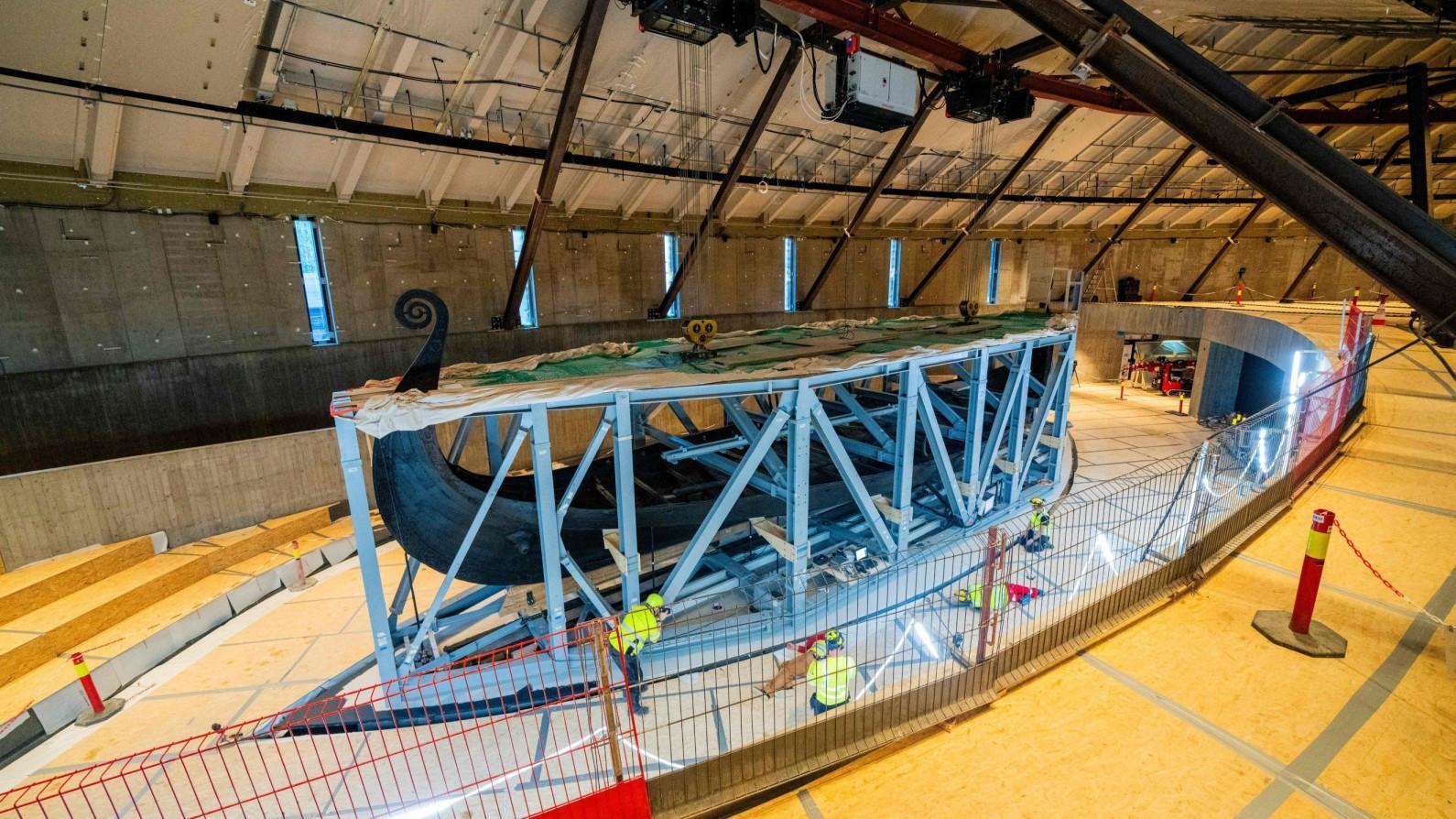
Three 1,200-year-old Viking ships that have stood the test of time are embarking on their final and possibly riskiest journey to their new forever home in Norway.
The first to relocate is the Oseberg, which on Sept. 10 slowly made its way from its current location in the old Viking Ship Museum, arriving intact a newly built addition that will house the national treasures in optimal conditions.
The extremely fragile oak hull inched forward so slowly its movement was almost undetectable to the human eye, the structure encased in a heavy protective steel rig.
The 100-meter journey took just a little under 10 hours, with the ship hanging from a crane moving on a track high above the ground, at a top speed of 24 centimetres per minute.
Named after the places where they were discovered, the Oseberg, Gokstad and Tune — all believed to have been built between 820 and 910 — have been housed in a cross-shaped building considered too small and unsuitable to conserve them properly.
A decision was therefore taken to move them to a new climate-controlled facility, built as an extension to the old museum, which should make it possible to maintain the ships in their current condition for at least another century.
Endless precautions have been taken to prevent any breakage or vibrations during the relocation.
Among other things, an oil services company experienced in high-precision work -- such as positioning massive structures 300 metres below the sea with millimetre accuracy -- has been called in.
If everything goes as planned, the Gokstad is scheduled to be relocated next during the autumn, and then finally the Tune in the summer of 2026.
All three ships were found in separate burial sites southwest and southeast of Oslo between 1867 and 1904, each one very distinct from the other.
Richly decorated with ornate carvings, Oseberg, the oldest of the three vessels, is considered the best preserved Viking ship in the world.
Gokstad is meanwhile the largest of the three, measuring 23 meters long and five meters wide and with space for 32 rowers.
Tune is much more decomposed than the other two and is believed to have been a particularly fast warship.
The new museum is set to open in 2027.